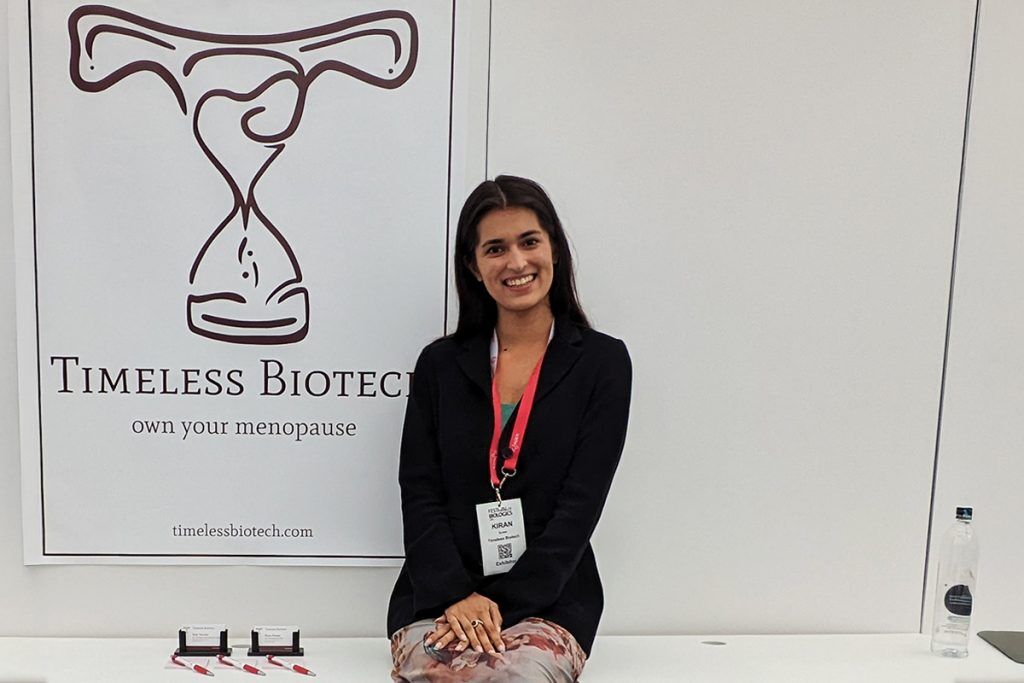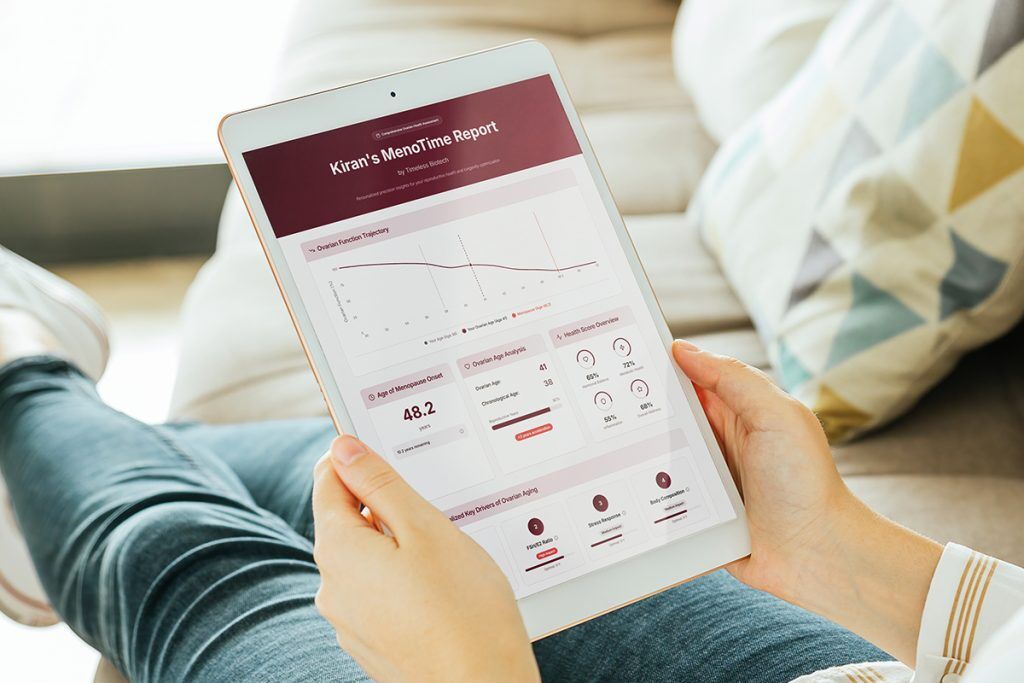
Timeless Biotech CEO on how machine learning moves beyond static hormone levels to offer a systems-level view of ovarian aging and prediction.
For decades, menopause prediction has sat awkwardly between clinical routine and educated guesswork – dependent on single hormone readings, incomplete patient histories and a patchwork of timelines that rarely reflect the biological complexity beneath. Attempts to model ovarian reserve or forecast time-to-menopause have often stalled at the limits of static data – AMH levels that fluctuate without warning, FSH values that resist categorization, and estradiol readings that mean one thing at 42 and quite another at 47. While fertility assessments have become more routine, the broader implications of ovarian aging – for systemic health, timing of intervention and longevity strategy – remain strikingly underexplored.
Timeless Biotech, the ovarian longevity company behind the patent pending MenoTime platform, aims to address this with a predictive engine trained not on static thresholds but on longitudinal relationships. Drawing on over 40,000 clinical datapoints, including precisely logged final menstrual periods, MenoTime’s algorithm analyzes not just hormone levels, but the interplay between biomarkers and contextual variables – from sleep quality and cycle history to waist–hip ratio and self-reported symptoms. The result is a personalized estimate of ovarian age and predicted menopausal timing, presented alongside the individual factors most responsible for the result – a move that shifts menopause forecasting from opaque report to interpretable health tool.
Longevity.Technology: The menopause conversation has long been boxed in by fertility timelines and hormone snapshots – reductive proxies for a transition that is neither uniform nor easily measured. For all the talk of personalization in modern medicine, menopausal forecasting has remained curiously blunt, often limited to single hormone readings that tell us little about timing and even less about trajectory. That MenoTime draws on tens of thousands of longitudinal data points to chart ovarian aging as a system – rather than a single signal – feels like a welcome pivot from guesswork to pattern recognition. In shifting the emphasis from static values to dynamic interactions, it also mirrors the nature of aging itself: nonlinear, contextual and not easily corralled into tidy thresholds.
But perhaps MenoTime’s real potential lies in what happens after the prediction – in reframing menopause not as a reproductive endpoint but as a gateway to targeted intervention, biological recalibration and longitudinal tracking. If ovarian aging is, as growing research suggests, a master clock for systemic aging in women, then tools like this must be designed not only to forecast but to guide – to inform the timing of hormone therapy, metabolic support or even fertility preservation. The model’s interpretability – identifying which variables most influence a given prediction – lends itself to agency, not abstraction. Yet predictive power only becomes equitable when the datasets underpinning it are inclusive; for MenoTime to scale beyond the health-optimized few, its insights must hold across metabolic profiles, racial backgrounds and hormonal baselines. Ovarian aging may finally be stepping into the longevity spotlight – but the job now is to keep it there, not as an outlier, but as a standard; to find out how Timeless Biotech plans to do exactly that, we sat down with founder and CEO Kiran Kumar.
Seeing the system, not the snapshot
Hormone testing has traditionally struggled with inconsistency – not because the data is meaningless, but because the interpretation has been reductive. “Hormones vary so significantly between individuals and throughout the cycle that many providers don’t even want to test them,” Kumar tells us. “However, hormones tell us everything – you just have to look at them together. Context matters.”

This is precisely where MenoTime aims to differentiate itself – by treating hormones not as isolated data points, but as dynamic signals whose predictive power lies in their interaction. “Individual markers, like a single hormone value, are barely predictive,” she explains. “It’s the constellations and intrinsic relationships between them that tell you everything.” The algorithm performs over 100,000 conditional evaluations per prediction; during training, it processed more than a billion mathematical operations to identify patterns too complex for standard clinical heuristics.
Diversity is data, too
In contrast to the one-size-fits-all hormone ranges still common in many lab reports, MenoTime explicitly incorporates demographic and lifestyle variables – both as risk markers and as modifiers. “Our model explicitly incorporates demographic inputs like race because both have clinically documented associations with ovarian aging,” says Kumar, citing earlier menopause onset in specific populations as one example.
But generalizability goes further than race. Metabolic and lifestyle risk is modeled through proxies like waist–hip ratio, sleep quality, and even markers like UTI frequency. For those opting in, the engine can incorporate advanced bloodwork such as inflammatory markers or lipid ratios. “What’s empowering is that the majority of our highest-weighted predictors are modifiable,” she adds. “Users aren’t just getting a prognosis – they’re gaining actionable insight.”
From symptom to signal
The biological shift of menopause is often framed as an endpoint – the cessation of fertility, the close of one chapter. But MenoTime takes a different view. “Ovarian decline is a biological turning point that accelerates aging across nearly every system,” Kumar says. “The ovaries age 2.5 times faster than other organs, and once menopause hits, the loss of endogenous hormones can double cardiovascular risk, increase frailty and accelerate biological age significantly.”

Here, the model isn’t just a forecasting tool – it becomes a framework for intervention. MenoTime’s predictive engine can help identify therapeutic windows: for instance, the early post-menopause phase when estrogen therapy is most effective, or the subtle early declines in melatonin and ovulatory stability that precede the more dramatic hormonal shifts of midlife. “Clinical research finds that the final menstrual period is followed by a nine-year biological age acceleration within just six months,” she explains. “A stitch in time saves nine.”
Not just a report, but a relationship
What differentiates MenoTime from one-off diagnostics is its longitudinal design – the ability to adjust predictions and track outcomes over time. “Once a person reviews their ovarian age and personalized drivers, they also get targeted, clinically validated protocols,” Kumar explains. As users update symptom data or submit new bloodwork, the model re-evaluates their profile. “This allows us to show not just a snapshot, but a trajectory.”
That reactivity means users can see whether interventions are having a measurable impact on ovarian health – a rare feedback loop in women’s health, where most tools remain static or siloed. “In essence, MenoTime becomes a longitudinal health companion,” she adds – a phrase that frames the technology not as a solution, but as a guide.
Plugging into the bigger picture
MenoTime’s architecture is designed for interoperability – ready for integration with clinics, platforms and employer wellness programs. “Whether it’s a clinic offering menopause care, a fertility center or a longevity-focused service, MenoTime can become a plug-and-play ovarian health layer in their existing system,” Kumar says. LOIs are already in development, with a go-to-market strategy that blends B2B integration with direct-to-consumer engagement.
For her, however, the wider goal is one of normalization: “This needs to be a standard test for all women. Endogenous hormone production and ovarian aging is too important and vulnerable in today’s environment for it not to be monitored.”
The rhythm we haven’t measured
As longevity science becomes increasingly personalized and data-driven, the risk is not omission but oversight – measuring what’s convenient, not what matters. Ovarian aging may be one of the most under-studied but actionable trajectories in women’s health – and tools like MenoTime offer the possibility of finally tracking it in a way that is both clinically meaningful and personally relevant.
Kumar is clear that female healthspan hinges on ovarian longevity and menopause management – and that MenoTime is a tool essential for both. “This isn’t just about when your period ends,” she says. “It’s about how your whole system changes – and what you can do about it.”


